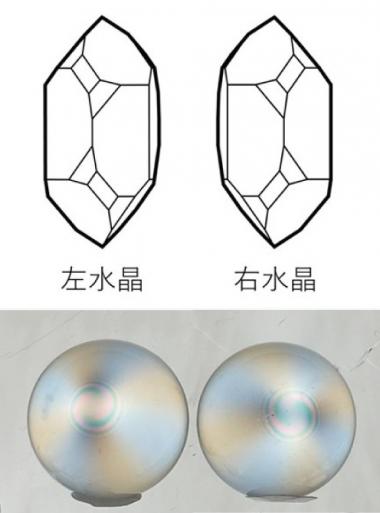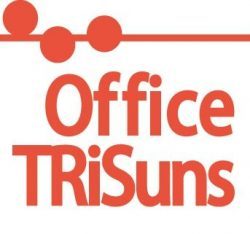大阪公立大学と東京大学大学院理学系研究科が2024年2月1日に発表しました。
発表リリースはこちらです。

通常の物質中では原子が振動することにより熱が伝わりますが、キラルな水晶では原子が回転しながら振動し、その波動が水晶内をらせん状に伝わる、キラルな物質特有の現象(キラルフォノン)が生じているとのことです。
右水晶では右方向、左水晶では左方向に原子が回転してしていて、角運動量を電気信号に変換して検出できるそうです。


Just my memorandum about space, astronomy, hearth and lifescience
大阪公立大学と東京大学大学院理学系研究科が2024年2月1日に発表しました。
発表リリースはこちらです。

通常の物質中では原子が振動することにより熱が伝わりますが、キラルな水晶では原子が回転しながら振動し、その波動が水晶内をらせん状に伝わる、キラルな物質特有の現象(キラルフォノン)が生じているとのことです。
右水晶では右方向、左水晶では左方向に原子が回転してしていて、角運動量を電気信号に変換して検出できるそうです。
On Monday, May 10, at 4:23 p.m. EDT the spacecraft fired its main engines full throttle for seven minutes – its most significant maneuver since it arrived at Bennu in 2018. This burn thrust the spacecraft away from the asteroid at 600 miles per hour (nearly 1,000 kilometers per hour), setting it on a 2.5-year cruise towards Earth.
www.nasa.gov/press-release/nasa-s-osiris-rex-spacecraft-heads-for-earth-with-asteroid-sample
On Monday, May 10, at 4:23 p.m. EDT the spacecraft fired its main engines full throttle for seven minutes – its most significant maneuver since it arrived at Bennu in 2018. This burn thrust the spacecraft away from the asteroid at 600 miles per hour (nearly 1,000 kilometers per hour), setting it on a 2.5-year cruise towards Earth.
www.nasa.gov/press-release/nasa-s-osiris-rex-spacecraft-heads-for-earth-with-asteroid-sample
NASA’s Ingenuity Mars Helicopter has a new mission. Having proven that powered, controlled flight is possible on the Red Planet, the Ingenuity experiment will soon embark on a new operations demonstration phase, exploring how aerial scouting and other functions could benefit future exploration of Mars and other worlds.
www.nasa.gov/press-release/nasa-s-ingenuity-mars-helicopter-to-begin-new-demonstration-phase
東北大学大学院理学研究科 関口仁子准教授、渡邉跡武特任助教らによる共同研究グループは、陽子とヘリウム3原子核の高精度散乱実験を行い、実験的な証拠を掴むのが難しいとされてきた三つの陽子の間に働く三体力にアプローチする手法の開発に成功しました。本研究は、同グループが開発した偏極ヘリウム3装置と東北大学サイクロトロン・ラジオアイソトープセンター、大阪大学核物理研究センター、理化学研究所小型中性子源の各加速器施設を駆使して展開されました。
www.kek.jp/ja/press/20210426/
NASA is getting ready to send astronauts to explore more of the Moon as part of the Artemis program, and the agency has selected SpaceX to continue development of the first commercial human lander that will safely carry the next two American astronauts to the lunar surface. At least one of those astronauts will make history as the first woman on the Moon. Another goal of the Artemis program includes landing the first person of color on the lunar surface.
www.nasa.gov/press-release/as-artemis-moves-forward-nasa-picks-spacex-to-land-next-americans-on-moon
NASA is getting ready to send astronauts to explore more of the Moon as part of the Artemis program, and the agency has selected SpaceX to continue development of the first commercial human lander that will safely carry the next two American astronauts to the lunar surface. At least one of those astronauts will make history as the first woman on the Moon. Another goal of the Artemis program includes landing the first person of color on the lunar surface.
www.nasa.gov/sites/default/files/thumbnails/image/for_press_release.jpg
www.nasa.gov/press-release/as-artemis-moves-forward-nasa-picks-spacex-to-land-next-americans-on-moon
New observations with the European Southern Observatory’s Very Large Telescope (ESO’s VLT) indicate that the rogue comet 2I/Borisov, which is only the second and most recently detected interstellar visitor to our Solar System, is one of the most pristine ever observed. Astronomers suspect that the comet most likely never passed close to a star, making it an undisturbed relic of the cloud of gas and dust it formed from.
www.eso.org/public/news/eso2106/
Astronomers have detected X-rays from Uranus for the first time, using NASA’s Chandra X-ray Observatory. This result may help scientists learn more about this enigmatic ice giant planet in our solar system.
www.nasa.gov/mission_pages/chandra/images/first-x-rays-from-uranus-discovered.html
The thruster system that will propel NASA’s Gateway around the Moon was recently fired up for the first of many ground tests to ensure the Power and Propulsion Element (PPE) is ready for flight.
www.nasa.gov/feature/glenn/2021/we-are-fired-up-gateway-propulsion-system-passes-first-test
https://youtu.be/igX581JNjGg